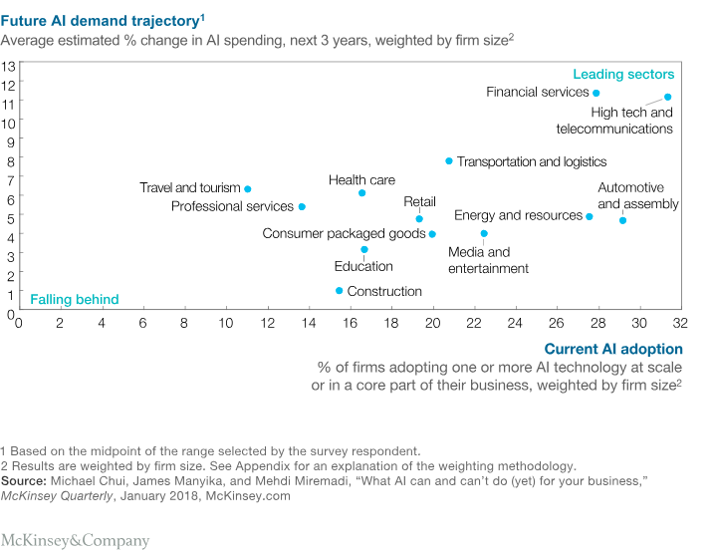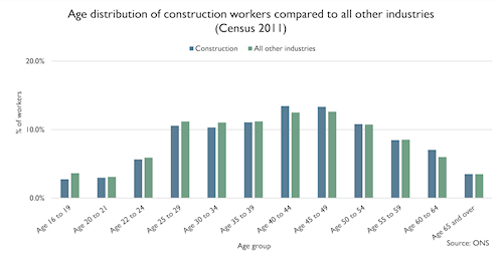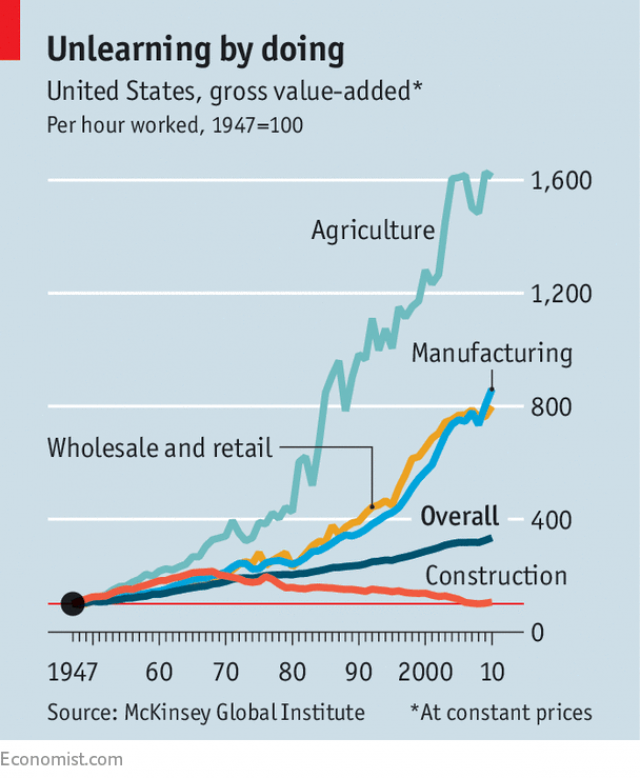There is no simple measure of the impact of digital technology on the building industry. Some impacts are more profound than others. For example, project management platforms have evolved leaps and bounds over the past 20 years, whereas practicum means and methods have – for the most part – remained static – as in the building industry.
The impact of AI on the building industry requires an even more focused lens to detect the subtleties of a nascent technology. Although AI can be traced back as early as 1958, the practical applications of today’s AI engines are far more sophisticated, and seamlessly integrated into everyday life – but not the building industry.
AI software, in its simplest sense, can be thought of as a collection of context specific algorithms and commands embedded to generate a desired range of outcomes from which to optimize solutions. The broad range of outcomes, expediency of execution, and exactitude of data are options that, represents exponential steps up for many industries – especially design; but not so construction. At least not yet.
Of far more interest are developments in AI IBM Watson health, genome study, and many other cutting-edge Watson technologies, such as; Watson Assistant, where I can create my own machine learned PA. But so far, no hopes of ‘IBM Watson Construction.’
That may change someday, however, a lot of hurdles must be overcome before it does. For now, AI resides almost exclusively in the AEC industries, as a generative design and risk analysis tool. Yet, a lot of confusion around what AI is within the industry exists, for e.g., this post conflates drones, robots, and sensing IoT devices, with AI, which are unreliable examples of practicum that confuse people.
There are exceptions, however, within project controls and project management. BASIS, an AI engine driven CPM scheduling and risk management program shows promise as a building industry oriented tool. It has been tried and true to promising result within a beta group of builders, yet, its future remains wide open.
There are innate idiosyncrasies preventing the building industry from adopting new technologies, all of which I have posted about at one time or another in this space. AI will be no different.
Top 5 or 6 Techno-resilient Building Industry Hangups
The investment of the building industry in technology is the lowest of all peer industries, which discourages talent by not putting a premium on it, or not comprehending the value of quality expertise.The investment of training by the building industry is lower than it has ever been, and not likely to change any time soon. Such training would be mandatory for system operators, of which there already is a shortage.
Given the building industry’s resistance to technology you would think there was less VC interest, but since 2013, as much as USD$1.08B has been put up on over 207 ventures. What ROI remains to be seen.OnShape, ProCore, and PlanGrid were leading the field, until the January, 2018 Katerra infusion of USD$865.

McKinsey’s outlook for AI impact on construction. Any questions?
Any investment in technology requires first finding capable operators, and investing in training, software licenses, and taking a bona fide, analytical, look at project controls. The scarcity of operators and lifecycle outgo of incorporating an AI platform will be prohibitive to specialty contractors who make up 75% of the market.
“AI makes sense in construction only if you take out the human element, as in total RDRs (robotic deployed resources)
The median age of a construction worker is mid 40’s. This group rates high in mechanical skills, but low in digital tools – other than front-end apps (some of which I don’t knock). There is currently a demand far exceeding supply of skilled trades-people.

They represent a poor ROI to contractors, as they will soon age out with their newly learned skills.
Younger industry members are in great need. The 25-40 generation is far more tech savvy than any before it, but more clueless in practicum, or field work proper. Many are going in for “construction management degrees,” which are typically recognized for entry-level administrative duty – never in the field.
The criteria for a construction management degree is seldom vigorous enough to turn out anything more than an entry level candidate. The absence of field training proper assures this prophecy.
While AI shows promise in tackling mundane office administration, such as processing RFIs, submittals, and meeting minutes, the over-reliance on HI (human interface) necessary to execute work in the field makes AI a non-starter.
No matter the size or number of AI engines you develop, the industry’s notorious bottom-out production rates would be largely unaffected by any such device, at least until robots become regular fixtures on worksites.

All other industries showed major growth, whereas construction actually declined.
-but then, the problem is global:

So all hype aside, AI looks to be best poised for EPC disruption, where it can make enormous impacts in generative designs and parametric modeling. Yet, I can’t come up with any compelling scenario where AI could make significant waves for workers outside the field office. At least not in the next 10 years.








